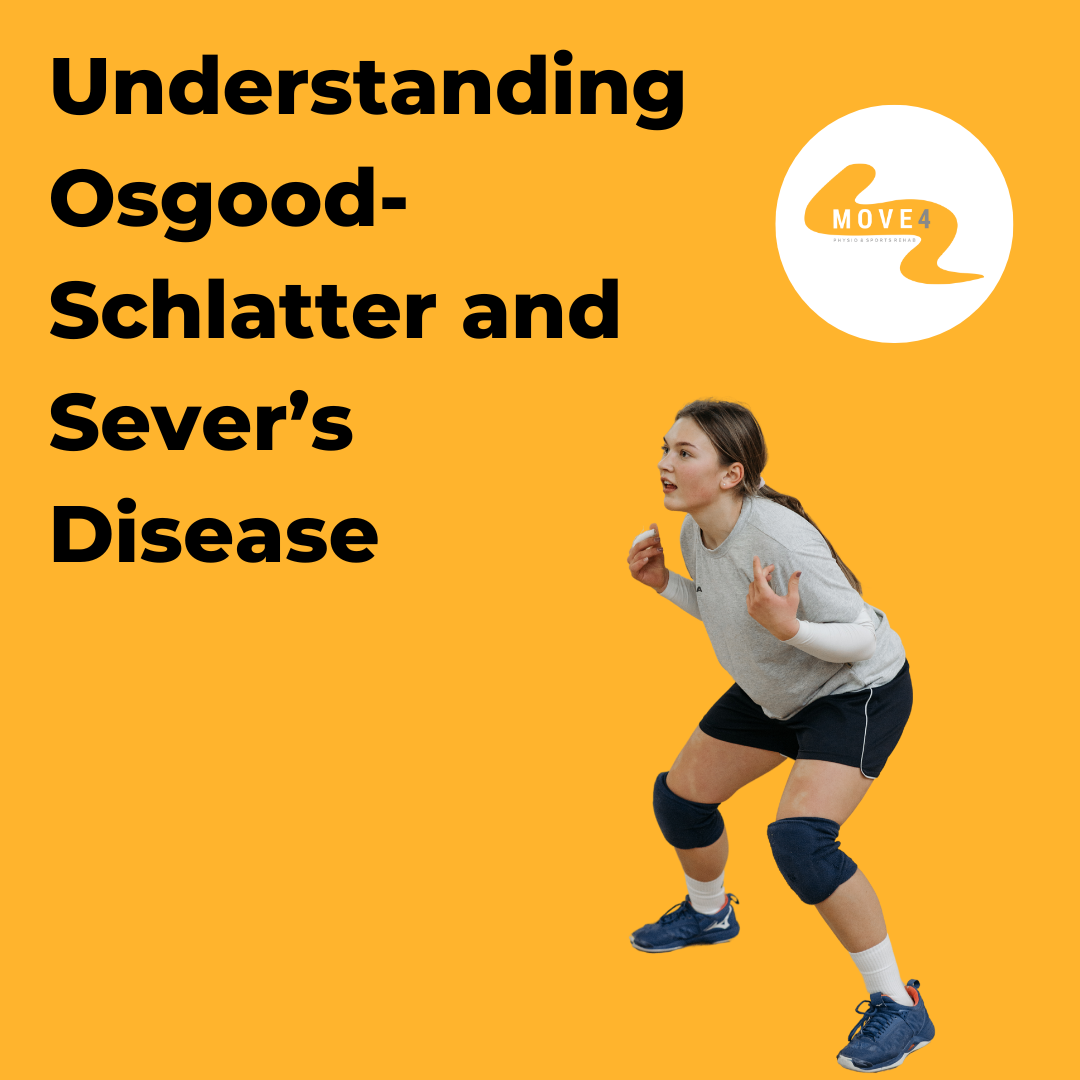
If you’re the parent of a sporty child or teen who has suddenly started complaining of knee or heel pain, you may have heard terms like Osgood-Schlatter or Sever’s disease mentioned. These are two of the most common growth-related conditions we see in young people at Move4 Physio in Northampton — and although the names can sound alarming, the good news is: they’re manageable with the right advice and support.
In this blog, we’ll break down what these conditions are, why they develop, how to spot the signs, and what physiotherapy can do to help your child stay active and confident during this key phase of their development.
Osgood-Schlatter disease affects the top of the shinbone, just below the kneecap, where the patellar tendon attaches. It typically presents as a painful, swollen bump at the front of the knee.
Sever’s disease affects the back of the heel, where the Achilles tendon connects to the heel bone. Children with Sever’s usually complain of heel pain, especially during or after sport, and may limp or avoid putting pressure on the heel.
Both conditions are types of growth plate irritation. Growth plates (also called epiphyseal plates) are areas of developing tissue at the ends of long bones. They’re essential for bone growth during childhood and adolescence, but they’re also more vulnerable to stress and overload than mature bone.
During periods of rapid growth — often around ages 9 to 14 — a child’s bones, tendons, and muscles are all adapting at different rates. While it’s a myth that bones grow faster than muscles and tendons, the change in length and structure of these tissues can increase stress on attachment points like the shin or heel.
At the same time, active children are often training across multiple settings:
This combination of high activity levels and a growing body is what puts them at risk.
If your child or teen is developing one of these conditions, you may notice:
The key message here is:
👉 Don’t panic — but don’t ignore it either.
Osgood-Schlatter and Sever’s are not dangerous, and they don’t cause permanent damage when managed properly. But if left unaddressed, they can:
Early intervention from a qualified physiotherapist can make a huge difference — not just in settling the symptoms, but also in preventing them from returning.
At Move4 Physio in Northampton, we support children and teens with growth-related conditions every week. Here’s how we approach it:
We take the time to understand the whole picture — growth history, training load, school sport, footwear, and any other contributing factors. We also assess movement patterns, strength, and flexibility to identify areas of increased stress.
We don’t believe in telling kids to “just stop” their sport unless absolutely necessary. Instead, we help them:
We often liaise with coaches, teachers, and parents to make sure everyone’s on the same page.
Targeted exercises to build lower limb strength, improve movement control, and support the areas under stress (especially around the knee and ankle) are essential.
We might also work on:
The right shoes can make a big difference — particularly in Sever’s disease. We’ll advise on footwear, insoles, or heel lifts if appropriate, and explain why it matters based on your child’s biomechanics and sport.
❌ “They just need to grow out of it.”
👉 They might, but it could take months — and symptoms can worsen in the meantime. Active management is better than waiting and hoping.
❌ “They have to stop all sport.”
👉 Not always! In many cases, smart adjustments allow continued participation without making symptoms worse.
❌ “It’s just growing pains.”
👉 These conditions are more than vague aches — they involve specific irritation at the growth plate and need targeted support.
If your child:
…then it’s time to book in for a physiotherapy assessment.
At Move4 Physio, our Northampton-based physios are experienced in supporting young athletes and will create a tailored plan to reduce pain, manage load, and keep them doing the things they love.
Pain around the knee or heel in a growing child isn’t something to panic about — but it’s not something to brush off either. With the right physiotherapy input, we can help your child stay active, confident, and pain-free throughout their growth years.
📅 Book an assessment today with our expert team at Move4 Physio Northampton — and give your young athlete the support they need to keep moving well.
🔗 Book online or learn more about our services: https://move4physio.janeapp.co.uk/
📍 Move4 Physio – Specialist Physio for Young Athletes in Northampton